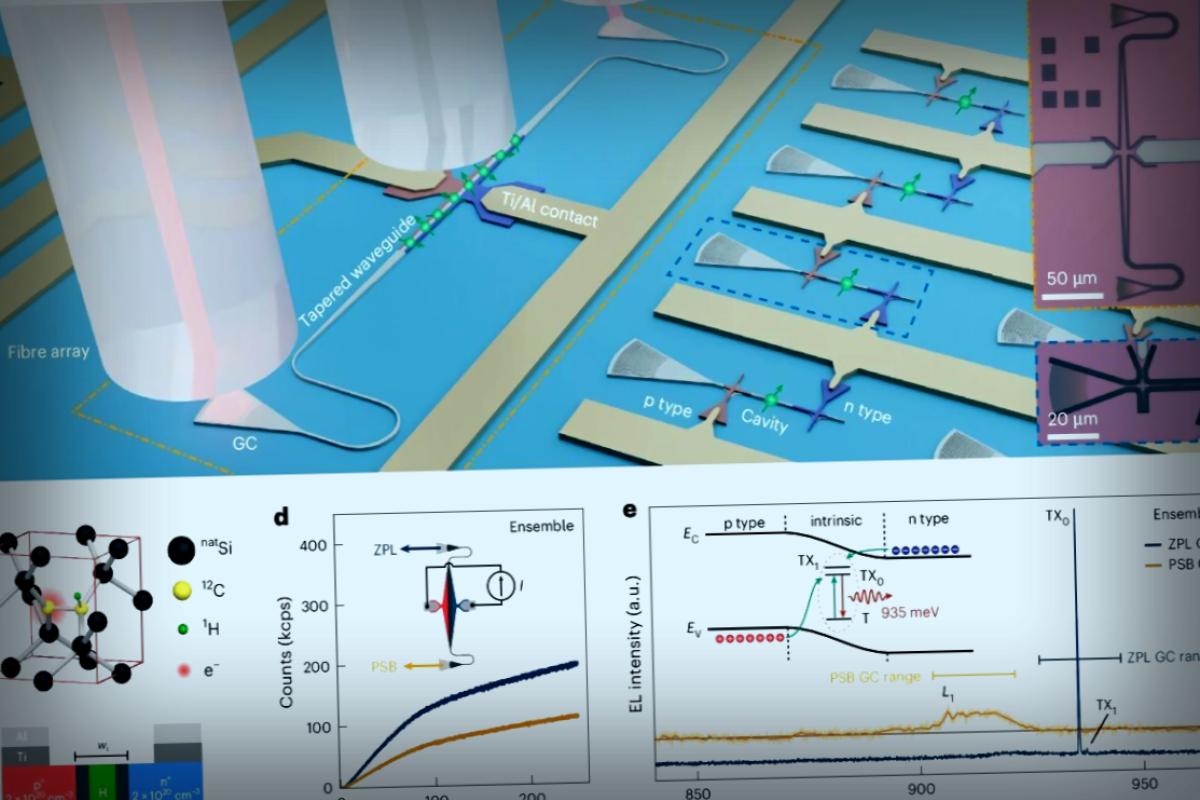Scientists from Simon Fraser University’s Quantum Technology Lab, in collaboration with Canadian quantum firm Photonic Inc., have made a significant breakthrough in the realm of quantum computing. They have developed a cutting-edge silicon-based quantum device that boasts both optical and electrical control capabilities.
The findings, which are detailed in a study published in Nature Photonics, highlight groundbreaking diode nanocavity devices aimed at achieving electrical regulation of silicon color center qubits.
What’s particularly amazing is that this team has demonstrated for the first time an electrically injected single-photon source using silicon. This represents a big leap towards realizing functional quantum computers, known for their ability to exceed the computing prowess of today’s most advanced supercomputers and offering advancements in various fields such as chemistry, materials science, medicine, and cybersecurity.
According to Daniel Higginbottom, one of the physicists involved, “Previously, our focus was mainly on using lasers to control these qubits, known as T centers. Now, with electrical control introduced, we can elevate the capabilities of our devices, a significant move towards their integration into scalable quantum computing systems.”
Michael Dobinson, a Ph.D. candidate and lead author, emphasizes that this breakthrough gives the team a chance to explore numerous applications for these devices, along with the potential for scaling them for larger quantum processors. He expresses enthusiasm, stating, “This initial demonstration shows that we can create devices that allow for both optical and electrical control of T centers simultaneously, which is a thrilling prospect for quantum computing and networking endeavors. The combination of these operational modes with the silicon platform greatly enhances its scalability and versatility.”
Estate recipients Stephanie Simmons and Mike Thewalt, who head SFU’s laboratory, co-founded Photonic Inc. with the vision of spearheading the development of commercial-grade quantum computers and networking solutions. Recently, the company announced plans to set up a research and development hub in the UK and was a key player in this research.
Christian Dangel, from Photonic Inc., who also co-authored the study, mentioned, “This project was a remarkable occasion to utilize Photonic’s state-of-the-art fabrication skills and examine their efficiency in upcoming devices within a research framework.”
At the Silicon Quantum Technology Lab, research into silicon color centers for quantum tech has been ongoing, placing the lab among the pioneers in the area.
Building on silicon for quantum applications presents an excellent opportunity for rapid scaling. The semiconductor industry has mastered the cost-effective mass production of silicon chips with extraordinary precision—an essential component of modern computing and networking, be it in smartphones or cutting-edge supercomputers.
Higginbottom states, “When our colleagues first suggested utilizing silicon color centers for quantum computing, it was a revolutionary idea at a time when not many were zeroing in on this potential. Nowadays, major players in technology and government, like Canada’s National Quantum Strategy, are investing heavily, eyeing a lead position in creating scalable quantum computers alongside tech giants like IBM, Google, and Microsoft, who are infusing significant funds to secure an edge.”
Reflecting on this pioneering work, Higginbottom notes: “This journey has been incredibly exciting for us. Back in 2020, we marked our introduction of silicon T centers for quantum applications. Moving into 2022, we managed to meld Single T centers with patterned nanophotonic setups. However, those systems lacked necessary interfaces or controls. Now, with this dual control mechanism, we are tapping into the capabilities vital for constructing functional computers made from these devices.”
Further Information: Michael Dobinson et al, Electrically triggered spin–photon devices in silicon, Nature Photonics (2025). DOI: 10.1038/s41566-025-01752-8
Article provided by Simon Fraser University.
This news was initially shared on Phys.org.



















